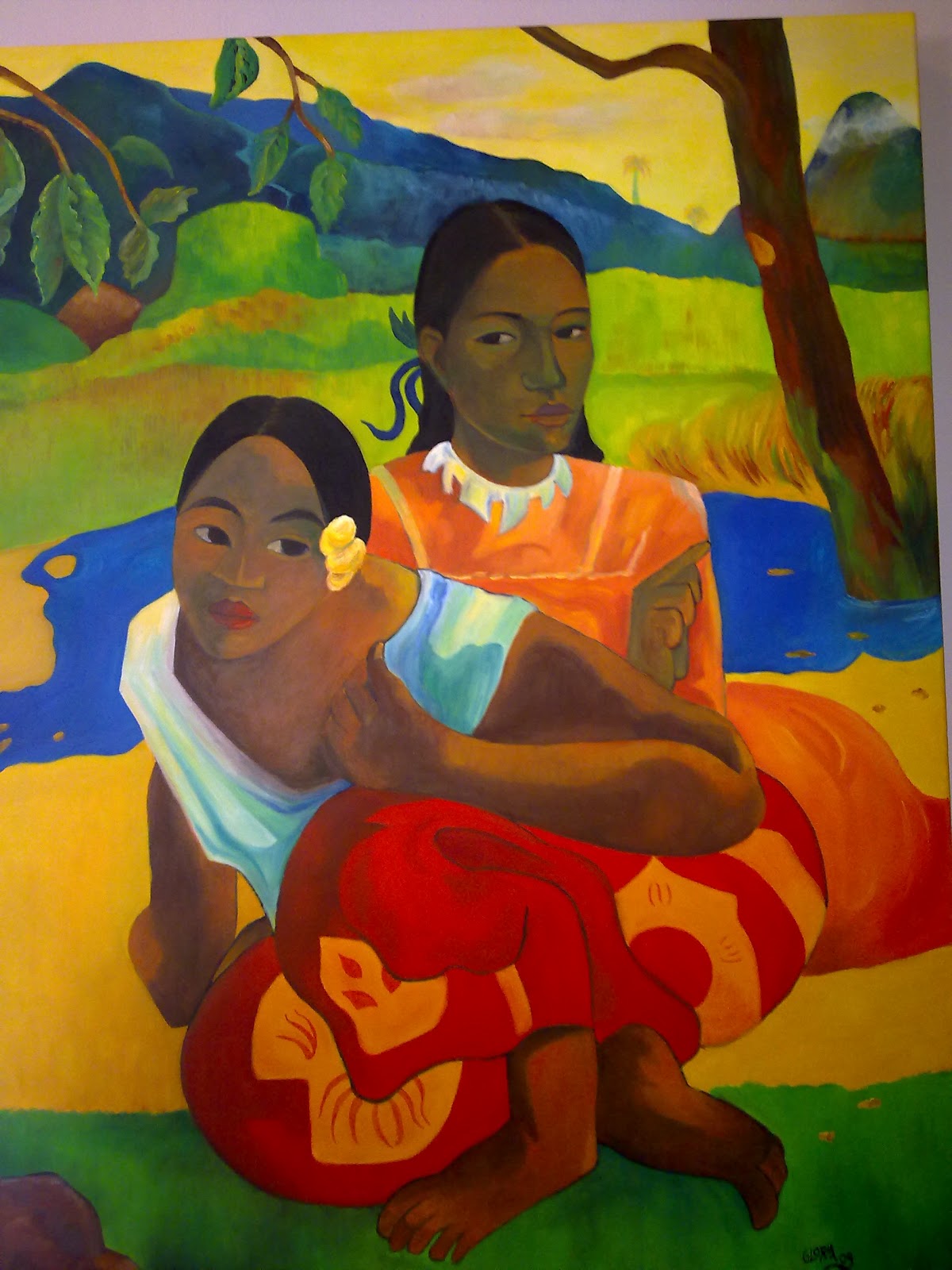
ARTESPACIOGLO Cuadro de Paul Gauguin
An 1873 oil on canvas, Working the Land (aka Landscape), by Paul Gauguin (1848-1903) the French post-impressionist painter. Painted before Gauguin decided to become a full-time artist and his first major canvas. It shows the influence of Camille Pissarro (1830-1903) and Jean-Baptiste-Camille Corot (1796-1875) in colours and composition, but the large amount of canvas given to the unusual cloud.
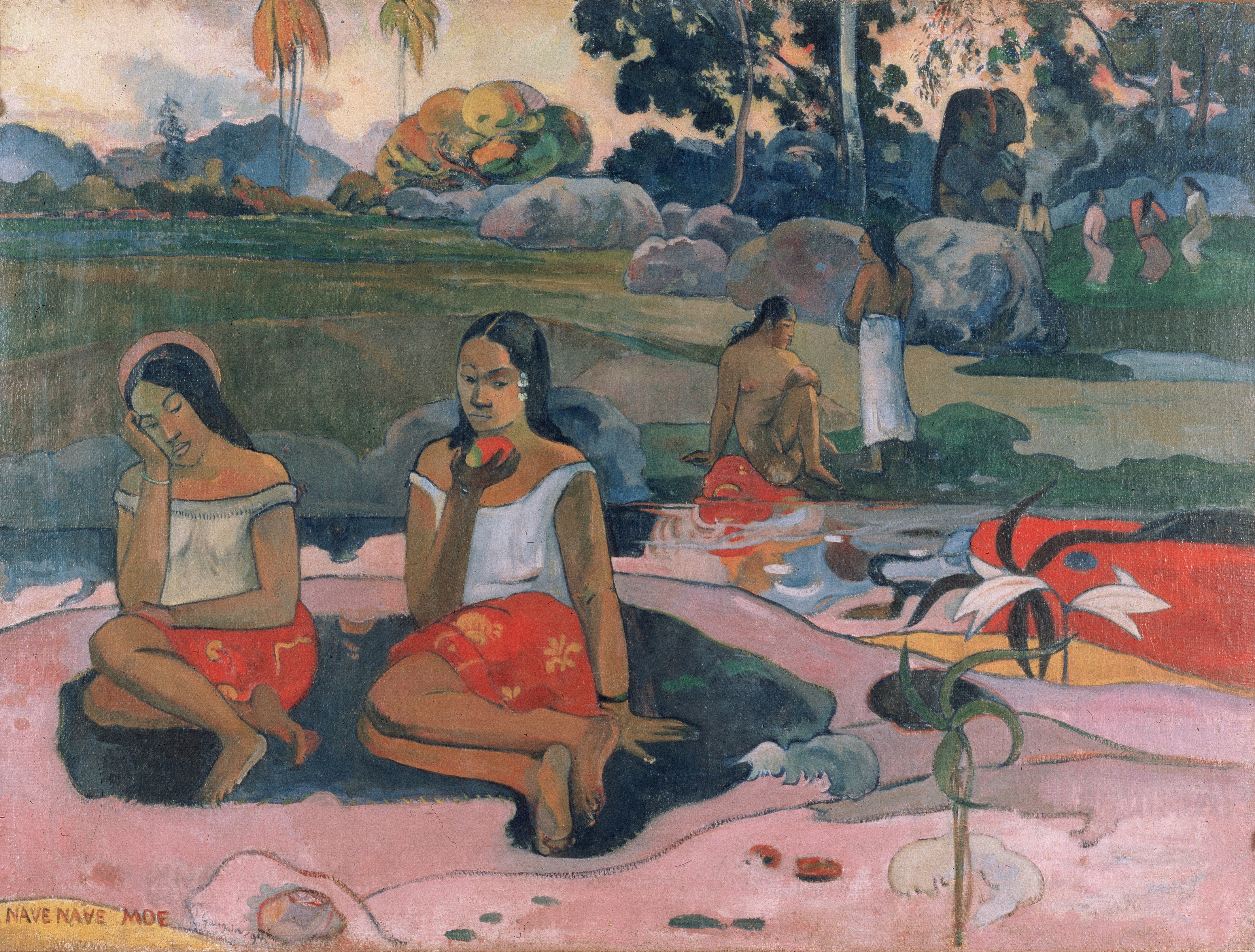
FilePaul Gauguin 068.jpg Wikimedia Commons
Vision After the Sermon (1888) This painting depicts a Biblical event in which Jacob wrestles with an angel. The dramatic use of color, shape, and line mirrors Gauguin's collection of Japanese woodblock prints. "Vision After the Sermon" is a very interesting mix of the aesthetics of primitive art with a subject that is Western European.
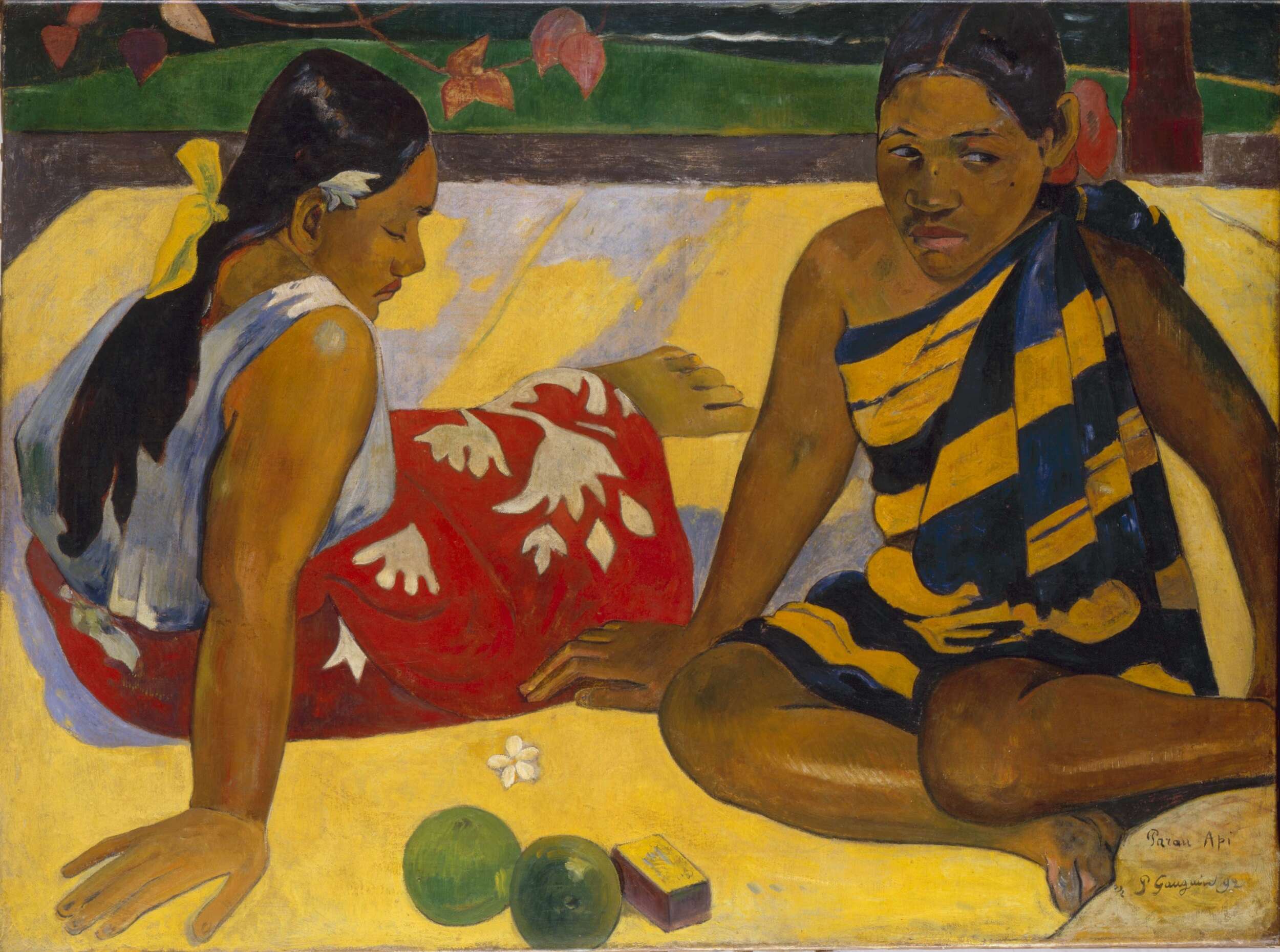
Paul Gauguin’s Tahiti A Creative Obsession
Que sommes-nous ? Où allons-nous ?) is a 1897-98 painting by French artist Paul Gauguin. The painting was created in Tahiti, and is in the Museum of Fine Arts in Boston, Massachusetts. Viewed as a masterpiece by Gauguin, the painting is considered "a philosophical work comparable to the themes of the Gospels".
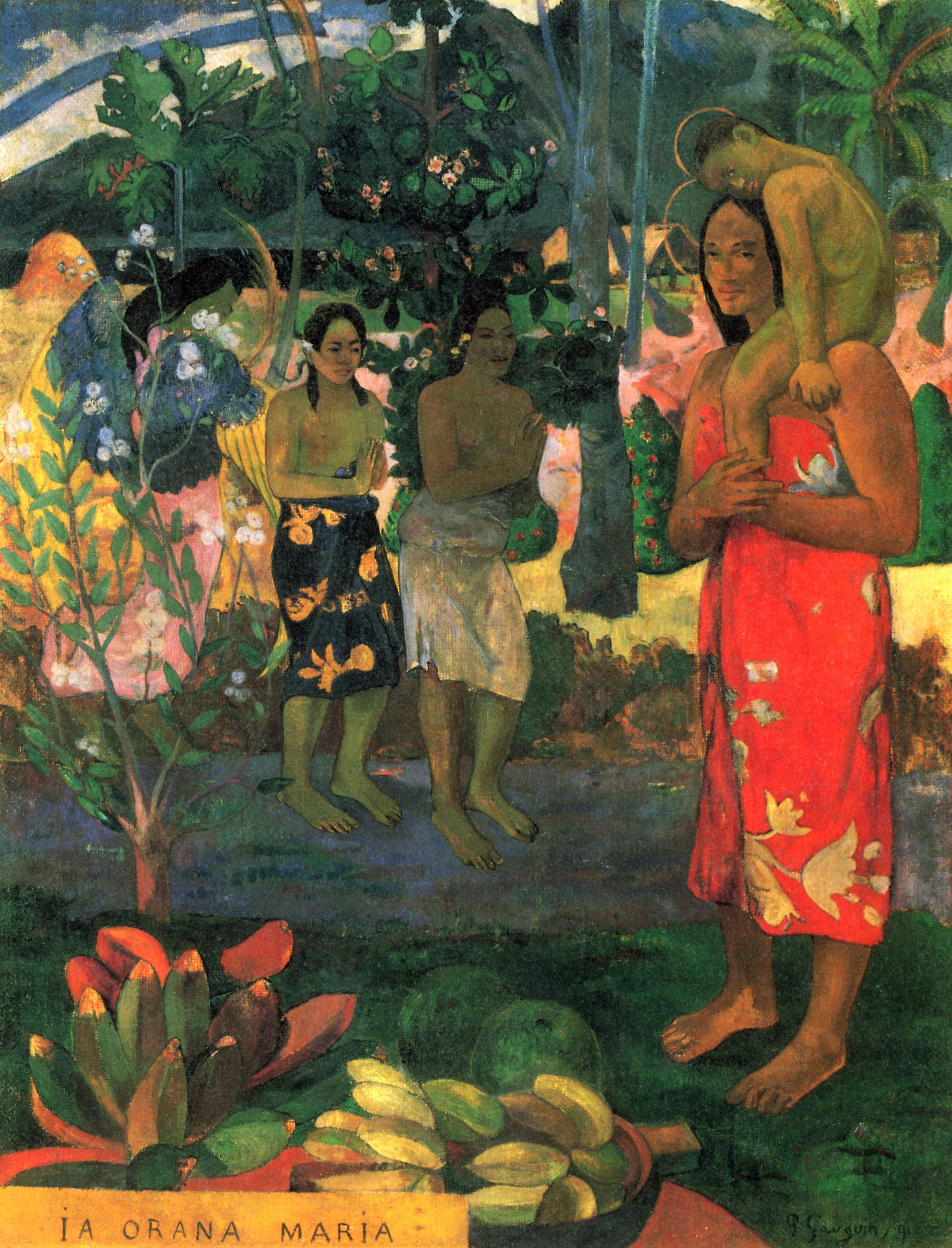
Paul Gauguin Art Museum AK
Paul Gauguin styled himself and his art as "savage." Although he began his artistic career with the Impressionists in Paris, during the late 1880s he fled farther and farther from urban civilization in search of an edenic paradise where he could create pure, "primitive" art. Yet his self-imposed exile to the South Seas was not so much an escape from Paris as a bid to become the new.

Paul GAUGUIN
Paul Gauguin (New York: Abrams, 1983), 28. Eugène Henri Paul Gauguin (UK: , US: , French: [øʒɛn ɑ̃ʁi pɔl ɡoɡɛ̃]; 7 June 1848 - 8 May 1903) was a French Post-Impressionist artist. Unappreciated until after his death, Gauguin is now recognized for his experimental use of colour and Synthetist style that were distinct from Impressionism.

FilePaul Gauguin 011.jpg Simple English Wikipedia, the free encyclopedia
Paul Gauguin was an extremely influential French Post-Impressionist artist, known for his experimentation with color and synthetist style.
.jpg)
Paul Gauguin (18481903) , Te Fare (La maison) Christie's
Eugène Henri Paul Gauguin. Eugène Henri Paul Gauguin (París, 7 de junio de 1848-Atuona, Islas Marquesas, 8 de mayo de 1903) fue un pintor posimpresionista reconocido después de su fallecimiento. El uso experimental del color y su estilo sintetista, fueron elementos claves para su distinción respecto al impresionismo.

FilePaul Gauguin 138.jpg
Eugène Henri Paul Gauguin (1848-1903) was a French neo-impressionist painter whose vivid paintings with their flat, bold colours and use of mystical and ambiguous symbols revolutionised art. Never quite gaining success in his own lifetime, Gauguin was driven to Polynesia in search of a place unspoilt by modernity where he could express himself.

Arte e Artistas Biografia e principais obras de Paul Gauguin
Paul Gauguin was a French Post-Impressionist artist, whose work deeply influenced the French avant-garde and modern artists, such as Pablo Picasso and Henri Matisse.As a descendant of the Peruvian nobility, he spent his early childhood in Lima, Peru. This nomadic upbringing aroused his curiosity for exotic lands and cultures, which would eventually lead him to Tahiti and Martinique.

Paul Gauguin The Black Pigs, 1891 Paul gauguin, Obras de arte, Arte
'Colour! What a deep and mysterious language, the language of dreams.' - Paul Gauguin When people think of post-impressionist painter Paul Gauguin, they think of his groundbreaking paintings of Tahitians done in primitive style.Most, however, would not normally think of Panama.Nevertheless, Panama played a small but significant part in this painter's remarkable life.
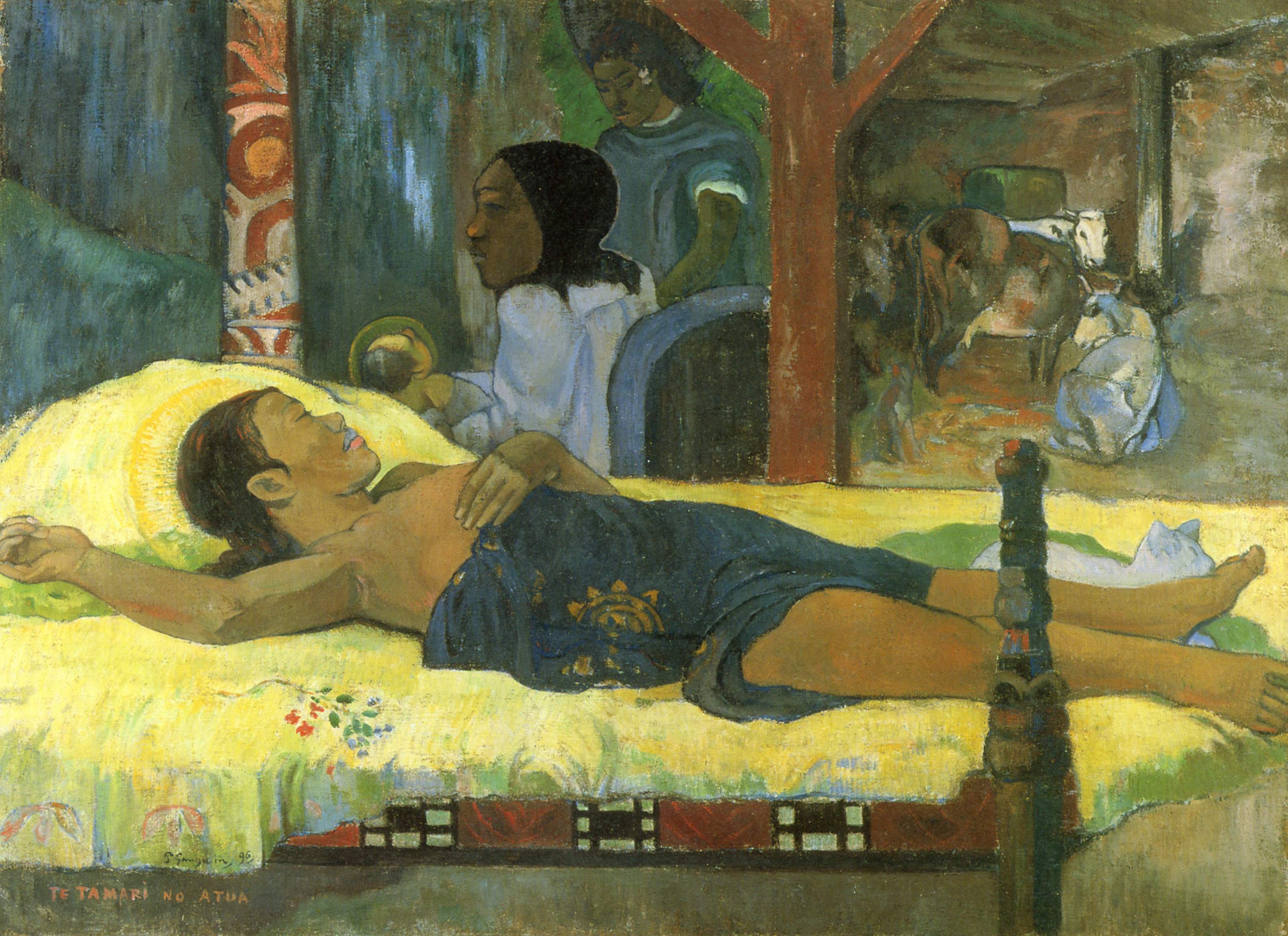
FilePaul Gauguin 062.jpg Wikipedia
Paul Gauguin's (1848-1903) famous image as the original Western "savage" was his own embellishment upon reality. That persona was, for him, the modern manifestation of the "natural man" constructed by his idol, the philosopher and writer Jean-Jacques Rousseau (1712-1778). Gauguin's rejection of the industrialized West led him to embrace.

Paul Gauguin Landscape with Three Figures Oil Painting Oil Paintings For Sale
Paul Gauguin (born June 7, 1848, Paris, France—died May 8, 1903, Atuona, Hiva Oa, Marquesas Islands, French Polynesia) French painter, printmaker, and sculptor who sought to achieve a "primitive" expression of spiritual and emotional states in his work. The artist, whose work has been categorized as Post-Impressionist, Synthetist, and.

Gauguin, Paysage de Tahiti, 1893, The Minneapolis Institute of Arts. Henri Matisse, Landscape
The Courtauld, London (Samuel Courtauld Trust) Teha'amana, also known as Tehura, was around 13 years old when she met Gauguin, according to Gauguin's own autobiographical journal, Noa Noa. At this young age, Teha'amana quickly became his 'native' wife, although whether she was a willing participant or not is unknown.
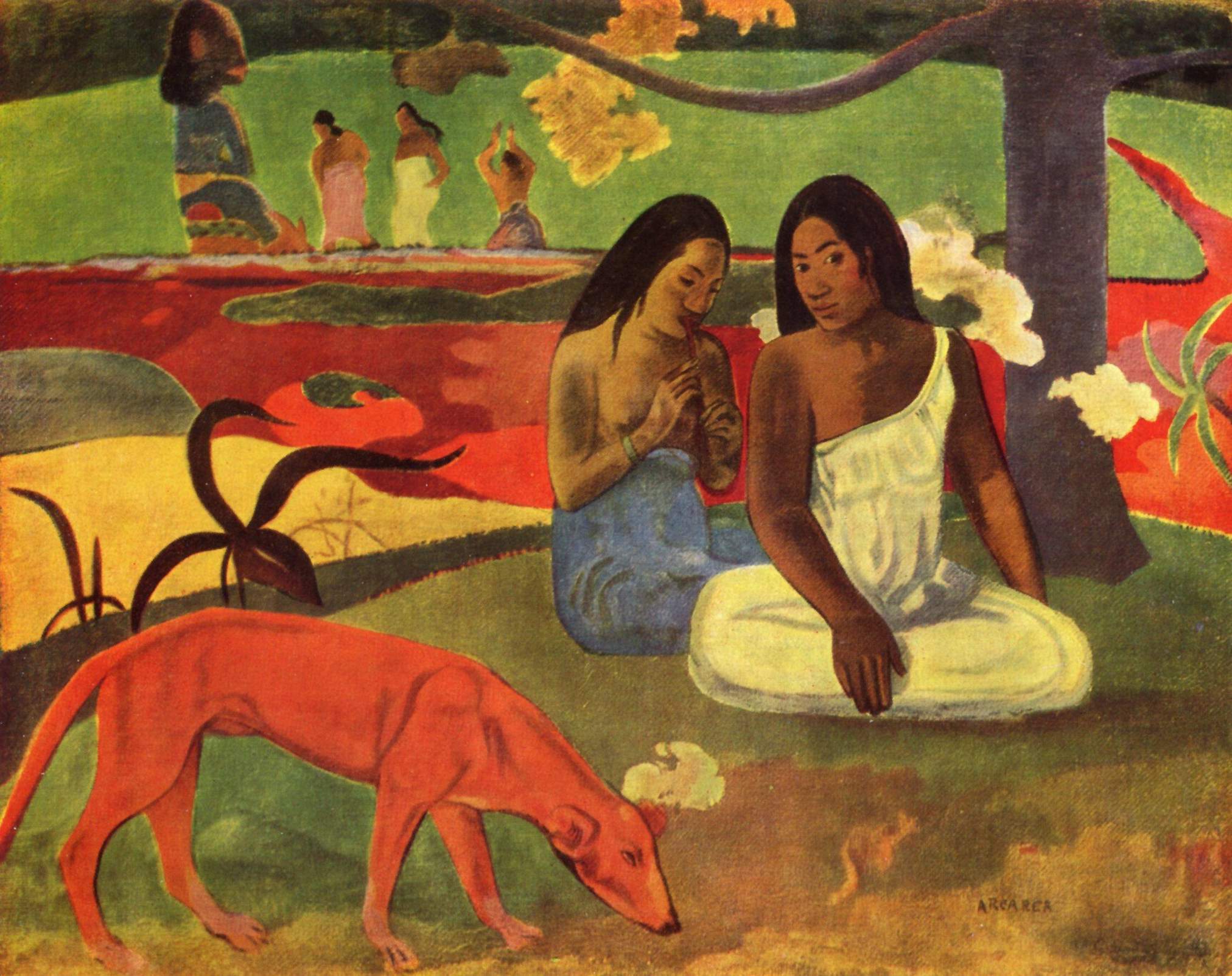
Gauguin, el pintor que sorprendió a los científicos por usar técnicas muy avanzadas para su época
Born in France, Paul Gauguin (1848-1903) spent part of his early childhood living in Peru, sailed the world in the French merchant marine and navy, and worked as a stockbroker. Starting out as an amateur painter, he became a full-time artist in the early 1880s and exhibited with the Impressionists. Increasingly dissatisfied with the limits of naturalism, Gauguin defied

Les Alyscamps Paul Gauguin The Encyclopedia of Fine Arts
QUICK FACTS. Name: Paul Gauguin. Birth Year: 1848. Birth date: June 7, 1848. Birth City: Paris. Birth Country: France. Gender: Male. Best Known For: French artist Paul Gauguin's bold colors.
Reproducciones De Arte Paisaje con pavos reales, 1892 de Paul Gauguin (18481903, France
Eugène Henri Paul Gauguin (UK: / ˈ ɡ oʊ ɡ æ̃ /, US: / ɡ oʊ ˈ ɡ æ̃ /, French: [øʒɛn ɑ̃ʁi pɔl ɡoɡɛ̃]; 7 June 1848 - 8 May 1903) was a French Post-Impressionist artist. Unappreciated until after his death, Gauguin is now recognized for his experimental use of colour and Synthetist style that were distinct from Impressionism.Toward the end of his life, he spent ten years.